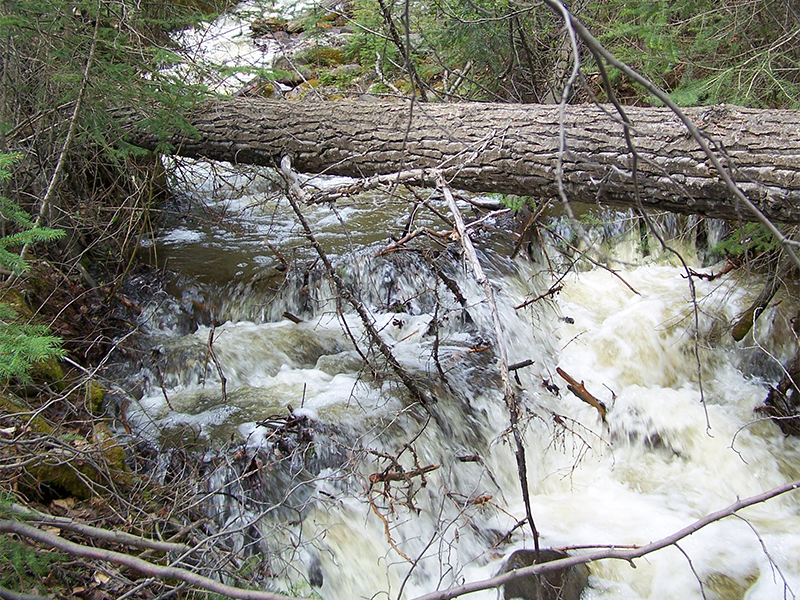
Abstract
We investigated the temporal dynamics of large woody debris (LWD) in five headwater streams before and after the 2001 Dogrib fire in the foothills of Alberta. The density of LWD varied from 5 to 41 logs per 50 m of stream reach and accounted for 19.4 ± 5.1 m3 ha−1 (mean ± standard error) of wood in the riparian zones and 114.1 ± 30.1 m3 ha−1 of wood in the bankfull margins of the stream channel. Individual logs averaged 18.9 ± 1.15 cm in diameter, 5.5 ± 0.7 m in length, and 0.2 ± 0.02 m3 in volume. Logs became significantly shorter in decay classes II–IV. Bridges were longer than partial bridges, which were longer than loose and buried LWD. Individual log volume was greatest for bridges, but not significantly different among other position classes. Bridges and loose LWD contributed little to stream morphology and function; however, 55% of partial bridges and all buried logs contributed to sediment storage, channel armouring, or riffles and pools in the stream channel.
Using dendroecological methods, we estimated the year of death of 108 of 115 spruce logs. LWD resulted from tree deaths that occurred between 1874 and 2001, so that time since death ranged from 5 to 132 years. Time since death increased from decay class II to III to IV and bridges were younger than LWD in all other position classes. Due to high rates of recruitment after fire, 16.5% LWD recruited between 2001 and 2006, most of which were bridges or partial bridges in decay class II. We anticipate a delay of 30–45 years before newly recruited logs contribute significantly to stream morphology and function. Depletion rates of LWD were exponential, such that 50% of LWD would be lost to decay, erosion or downstream transport within 30 years of tree death and <12% of LWD would persist more than 100 years. Since recruitment of new LWD in post-fire lodgepole pine stands is delayed by ca. 40 years while trees establish and stands develop, we anticipate periods of ca. 70 years between stand-replacing fires and recruitment of new, functional LWD into stream channels. During this time, fire-killed snags are an important source of LWD to small streams. For headwater streams in environments susceptible to floods and erosion we recommend that buffer zones comprised of snags to be established after fires. The goal of these post-fire buffers is to ensure a supply of LWD into streams for years to decades after a stand-replacing fire.
Citation
Jones, T.A., and L.D. Daniels. 2008. Dynamics of large woody debris in small streams disturbed by the 2001 Dogrib fire in the Alberta foothills. Forest Ecology and Management 256(10): 1751-1759.
To obtain a copy of this paper, please contact Dr. Lori Daniels.






